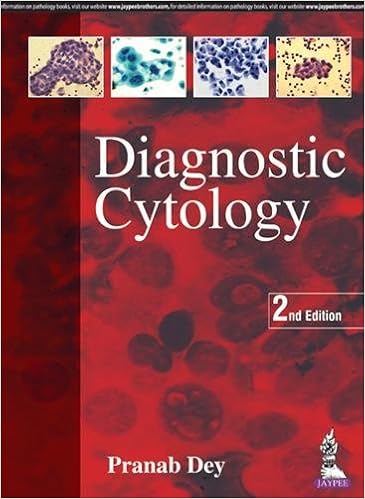Demay Cytology New Edition

Adobe Flash Player is required to view this feature. If you are using an operating system that does not support Flash, we are working to bring you alternative formats. Original Article Preoperative Diagnosis of Benign Thyroid Nodules with Indeterminate Cytology Erik K. Alexander, M.D., Giulia C. Kennedy, Ph.D., Zubair W.

Baloch, M.D., Ph.D., Edmund S. Cibas, M.D., Darya Chudova, Ph.D., James Diggans, Ph.D., Lyssa Friedman, R.N., M.P.A., Richard T. Kloos, M.D., Virginia A. LiVolsi, M.D., Susan J.
Hashimoto's thyroiditis is the prototypical example of autoimmune thyroiditis. This latter term has been used to describe a class of diseases in the.
Neoplasms of the Thyroid (Adapted, and Revised, from WHO Classification)(1) I. Adenomas (Fig. 18-1, below) A. Follicular 1. Colloid variant. The Pap Test: Exfoliative Gynecologic Cytology - By Richard Mac DeMay (Author); Price: $225.00; Publisher: ASCP Press; Binding: Hardcover; Length: 500 pages; Category. Art and Science of Cytopathology 4 Vol Set by Richard Mac Demay starting at $9.99. Art and Science of Cytopathology 4 Vol Set has 1 available. Although concise, this so-called 'baby DeMay' is far from incomplete or immature, and can serve as an excellent cytopathology resource for a pathology resident. (A staff pathologist with occasional responsibilities in signing out cytologic specimens may also find it useful.) But for the cytopathology component of general.
Mandel, M.D., M.P.H., Stephen S. Raab, M.D., Juan Rosai, M.D., David L. Steward, M.D., P. Sean Walsh, M.P.H., Jonathan I. Wilde, Ph.D., Martha A. Zeiger, M.D., Richard B. Lanman, M.D., and Bryan R.
N Engl J Med 2012; 367:705-715 DOI: 10.1056/NEJMoa1203208. Methods We performed a 19-month, prospective, multicenter validation study involving 49 clinical sites, 3789 patients, and 4812 fine-needle aspirates from thyroid nodules 1 cm or larger that required evaluation. We obtained 577 cytologically indeterminate aspirates, 413 of which had corresponding histopathological specimens from excised lesions. Results of a central, blinded histopathological review served as the reference standard. After inclusion criteria were met, a gene-expression classifier was used to test 265 indeterminate nodules in this analysis, and its performance was assessed.
Results Of the 265 indeterminate nodules, 85 were malignant. Edit Listview Subitem In Vb6 Date. The gene-expression classifier correctly identified 78 of the 85 nodules as suspicious (92% sensitivity; 95% confidence interval [CI], 84 to 97), with a specificity of 52% (95% CI, 44 to 59). The negative predictive values for “atypia (or follicular lesion) of undetermined clinical significance,” “follicular neoplasm or lesion suspicious for follicular neoplasm,” or “suspicious cytologic findings” were 95%, 94%, and 85%, respectively.
Analysis of 7 aspirates with false negative results revealed that 6 had a paucity of thyroid follicular cells, suggesting insufficient sampling of the nodule. Figure 2 Molecular Signal Intensities in Samples of Papillary Thyroid Carcinoma (Including the Follicular Variant and Tall-Cell Variant). The box plots indicate the interquartile range and median value; the box plot whiskers indicate the most extreme data points still within 1.5 times the interquartile range from each edge of the box plot. Signal intensity was stratified according to both the cytologic (indeterminate [Cyto-I] or malignant [Cyto-M]) category and the result (or “call”) of gene-expression classification (benign or suspicious).